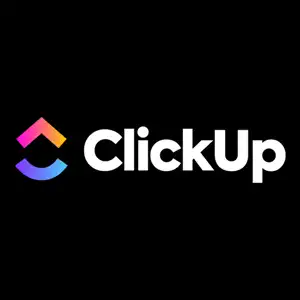Did you know that in 90% of studies, people who have specific and challenging goals performed better than those who had easy goals, “do your best” goals, or no goals at all? Not only that, but according to another recent study published by Forbes, people who describe or picture their goals in great detail are anywhere from 1.2 to 1.4 times more likely to successfully accomplish their goals than those who don’t.
As a student, having goals is important, but what really matters is making sure your goals are SMART. That’s an acronym that stands for Specific, Measurable, Achievable, Relevant, and Time-bound.
Just blindly setting goals won’t necessarily set you up for success. If you’re not setting the right kinds of goals, you won’t be motivated or able to achieve them. Using the SMART goals framework can help you set better goals for your school and personal life. It’s a model I follow myself in my work in the eLearning industry as well as in my personal life.
If you’re new to the concept, don’t worry because I’m going to outline some great educational SMART goals examples for students in the guide below to help you get inspired.
What is a SMART Goal?
A SMART goal is a specific, measurable, attainable, relevant, and time-bound goal.
Let’s break down each word in the acronym to get a better understanding of what each part of a SMART goal entails.
S: Specific
What exactly is it that you want to achieve? Don’t be vague. You must have a clearly defined objective. The more specific you are with your goals, the easier it will be to measure progress, stay focused, and determine whether or not you’re on track.
Wrong: Be a good student
Right: Get a 4.0 GPA for the spring semester
M: Measurable
Your goal should be something that you can track and measure progress on. This way, you’ll know if you’re making headway toward achieving your goal. Without a way to track progress, it will be very difficult to tell if you’re getting closer to your goal or not.
Wrong: Study better
Right: Spend two hours every day studying outside of class
A: Achievable/Attainable
Your goal should be challenging but also achievable. If your goal is too easy, you’re not pushing yourself enough. On the other hand, if your goal is too difficult, it can be discouraging and set you up for failure.
It’s important to find a balance and set a realistic goal that is ambitious but also achievable.
Wrong: Get a perfect score on the SAT
Right: Improve my SAT score by 100 points
R: Relevant
In addition to being achievable, your goal should also be relevant to what you’re trying to accomplish. Ask yourself if your goal is actually going to help you achieve the larger objective.
If not, it might be a good idea to reconsider and try to set a more relevant goal.
Wrong: Become popular
Right: Join an extracurricular activity to make new friends and improve my resume/college applications
T: Time-bound
Your goal should have a deadline attached to it. This will help you stay on track and ensure that you’re making progress. Without a timeline, it’s easy to procrastinate and put off working toward your goal. Goal setting must be tied to a specific timeline.
Wrong: Get good grades
Right: Get all A’s on my report card for the spring semester
SMART Goals Examples for Students
So, what are some examples of educational SMART goals for students? Take a look at these examples to get inspiration to set your own SMART goals.
1. Get a 4.0 GPA this semester.
- Specific- The goal is to get a 4.0 GPA for the semester.
- Measurable- The student can track their GPA progress on a report card or online portal provided by the school.
- Achievable-The student got a 3.8 GPA last semester, so a 4.0 is definitely achievable if they work hard enough.
- Relevant- The GPA is important for the student’s future success and getting into college.
- Time-bound- This goal is for the semester, so they have a time frame of around four months to achieve it.
2. Study for 2 hours per week for the entire semester.
- Specific- The goal is to study for 2 hours per week.
- Measurable- The student can keep track of how many hours they’ve studied in a planner or on their phone.
- Achievable- 2 hours per week is definitely achievable, especially if the student is diligent about sticking to their schedule.
- Relevant- The student wants to improve their grades, and studying is a great way to do that.
- Time-bound- This goal is for the semester, so they have a time frame of around four months to achieve it.
3. Join an extracurricular activity before the end of fall.
- Specific- The goal is to join an extracurricular activity.
- Measurable- The student can track their progress by looking at the list of extracurricular activities they’ve joined.
- Achievable- There are a lot of different extracurricular activities available, so this goal should be achievable for most students.
- Relevant- The student wants to make new friends and improve their college applications.
- Time-bound- The student wants to join an extracurricular activity before the end of fall, so they have a few months to accomplish this goal.
4. Read one new book each month
- Specific- The goal is to read one new book each month.
- Measurable- The student can track their progress by keeping a list of the books they’ve read.
- Achievable- Most people can easily read one book in a month, especially if it’s a shorter book.
- Relevant- The student wants to improve their reading skills.
- Time-bound- The student wants to read one book per month, so they have a time frame of 12 months to accomplish this goal.
5. Apply to 5 colleges by the end of the month
- Specific- The goal is to apply to 5 colleges.
- Measurable- The student can track their progress by keeping a list of the colleges they’ve applied to.
- Achievable- This goal is achievable if the student is organized and starts the application process early.
- Relevant- The student wants to get into college.
- Time-bound-The student wants to apply to 5 colleges by the end of the month, so they have a few weeks to accomplish this goal.
6. Get a part-time job by the end of the summer
- Specific- The goal is to get a part-time job.
- Measurable-The student can track their progress by keeping a list of the places they’ve applied to.
- Achievable- This goal is achievable if the student is willing to put in the time to fill out applications and go on interviews.
- Relevant- The student wants to earn some extra money.
- Time-bound- The student wants to get a part-time job by the end of the summer, so they have a set timeline to accomplish this goal.
7. Volunteer for 10 hours this semester
- Specific- The goal is to volunteer for 10 hours this semester.
- Measurable- The student can track their progress by keeping a list of the places they’ve volunteered.
- Achievable- This goal is achievable if the student is willing to give up some of their free time to help others.
- Relevant- The student wants to improve their community and help others.
- Time-bound- The student wants to volunteer for 10 hours this semester, so they have a few months to accomplish this goal.
8. Go to the gym 3 times a week for the entire semester
- Specific- The goal is to go to the gym 3 times a week.
- Measurable- The student can track their progress by keeping a list of the days they’ve gone to the gym.
- Achievable- This goal is achievable if the student is willing to make time for their health.
- Relevant- The student wants to improve their physical health.
- Time-bound-The student wants to go to the gym 3 times a week for the entire semester, so they have a set timeline to accomplish this goal.
9. Show up on time to class every day this month
- Specific- The goal is to show up on time to class every day.
- Measurable- The student can track their progress by keeping a list of the time they arrived at class each day.
- Achievable- This goal is achievable if the student is willing to plan their schedule and allow for extra time in case there is traffic or other delays.
- Relevant- The student wants to improve their attendance record.
- Time-bound-The student wants to show up on time to class every day this month, so they have a set timeline of 30 days to accomplish this goal.
10. Turn in all assignments on time for the entire semester
- Specific- The goal is to turn in all assignments on time.
- Measurable- The student can track their progress by keeping a list of the assignments they’ve turned in on time.
- Achievable- This goal is achievable if the student is willing to plan their schedule and start their assignments early.
- Relevant- The student wants to improve their grades.
- Time-bound-The student wants to turn in all assignments on time for the entire semester, so they have a set timeline of 16 weeks to accomplish this goal.
A Simple Tool for Tracking Your Goals
 Project Management Software with Goal Tracking | ClickUp
Project Management Software with Goal Tracking | ClickUp
With ClickUp's project management tool, you can easily set goals and stay on track to hit them with clear timelines, measurable targets, and automatic progress tracking.
Now that you know how to set SMART goals, it’s a good idea to have an easy way to measure your progress on the journey to achieving them.
Instead of juggling multiple spreadsheets, sticky notes, and endless email threads just to keep track of your goals and projects, look no further than ClickUp project management software.
If you’re someone who loves setting goals and wants to see real progress, ClickUp could be your new best friend.
Imagine a platform that streamlines all your tasks, milestones, and objectives in one easy-to-navigate space. With ClickUp’s goal-tracking feature, you can define your targets, break them down into manageable tasks, and watch as you inch closer to success. It’s like having a personal assistant that keeps you on track without the coffee runs!
What sets ClickUp apart for me is its versatility. Whether you’re a solo entrepreneur, a team leader, a teacher, or even a student managing your assignments, ClickUp adapts to your needs.
Set SMART goals, visualize your progress through intuitive charts, and celebrate those small wins that lead to big victories. The real-time collaboration tools also mean you’re never in the dark – everyone stays in the loop and can contribute their expertise. This has been super invaluable in my instructional design work, but the applications are endless.
It’s not just about numbers and charts. ClickUp understands that achieving goals isn’t just about ticking off boxes; it’s a journey. That’s why their software injects a dose of fun and motivation into your tasks. Customizable workflows, reminders, and integrations with your favorite apps make reaching your goals a breeze.
Click here to learn more about ClickUp.
A Final Word on SMART Goals for Students
Every student should have goals to strive for, and these goals should be SMART goals.
With SMART goals, students can create a plan to achieve their goals and track their progress along the way.
Approaching goal setting in a “SMART” way will make you more productive at school, more driven, more successful, and more satisfied.
Did you find these SMART goals examples for students to be helpful in setting your own goals for life and academic success? Share your thoughts by leaving a comment below.


